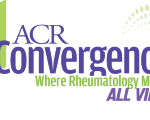When looking at the potential of the lung as an initiating site, for example, Dr. Holers noted that evidence shows airway abnormalities are more common in RA-related autoantibody positive at-risk people compared with controls. Immunoglobuli G (IgG) and IgA anti-cyclic citrullinated peptide 3 antibodies are differentially produced in the lung in people at risk of RA, as well as in classified patients, and sputum ACPA elevations are linked to neutrophil extracellular trap remnants in at-risk persons.3,4
Dr. Holers and his group are also looking at a number of mechanism-based approaches to interventions, such as the epigenetics of blood cells in at-risk populations for potential therapeutic pathways, multidimensional T cell analytic approaches, and others.
Co-Stimulation Blockade
Peter C. Taylor, MA, PhD, Norman Collisson Professor of Musculoskeletal Sciences and head of clinical sciences at the Botnar Research Centre in the Nuffield Department of Orthopedics, Rheumatology and Musculoskeletal Sciences at the University of Oxford, England, also reviewed observations on the mucosal origin of RA that have led to a hypothesis of the interaction of genes and the environment in preclinical development of RA.
He discussed evidence showing how CD4+ T cells are directly implicated in the pathogenesis of RA, as well as evidence showing that patients with joint pain and positive for ACPAs and rheumatoid factor (RF) are at risk of developing persistent arthritis.5,6 “In observational studies, about 40% of patients who have arthralgias and positive ACPA may go on to develop classification criteria for rheumatoid arthritis,” Dr. Taylor said.
This observation, he said, has generated the hypothesis that co-stimulation blockade in these persons may slow or even prevent the evolution of classification criteria positive RA. Two clinical trials are currently underway testing this hypothesis.
Future Directions
Where will all this research lead? Dr. Holers emphasized that “like cardiovascular disease is now, seropositive RA will become a disease in which prevention, early treatment and management of established disease will all be part of the rheumatologist’s care approaches.”
Mary Beth Nierengarten is a freelance medical journalist based in Minneapolis.
References
- Gerlag DM, Safy M, Maijer KI, et al. Effects of B-cell directed therapy on the preclinical stage of rheumatoid arthritis: The PRAIRI study. Ann Rheum Dis. 2019 Feb;78(2):179–185.
- Holers VM, Demoruelle MK, Kuhn KA, et al. Rheumatoid arthritis and the mucosal origins hypothesis: External protection becomes internal destruction. Nat Rev Rheumatol. 2018 Sep;14(9):542–557.
- Demoruelle MK, Weisman MH, Simonian PL, et al. Airways abnormalities and rheumatoid arthritis-related autoantibiodies in subjects without arthritis: Early injury or initiating site of autoimmunity. Arthritis Rheum. 2012 Jun;64(6);1756–1761.
- Demoruelle MK, Harrall KK, Ho L, et al. Anti-citrullinated protein antibodies are associated with neutrophil extracellular traps in the sputum in relatives of rheumatoid arthritis patients. Arthritis Rheumatol. 2017 Jun;69(6):1165–1175.
- Chemin K, Gerstner C, Malmstrom V. Effector functions of CD4+ T cells at the site of local autoimmune inflammation—Lessons from rheumatoid arthritis. Front Immunol. 2019 Mar;10:353.
- Bos WH, Wolbink GJ, Boers M, et al. Arthritis development in patients with arthralgia is strongly associated with anti-citrullinated protein antibody status: A prospective cohort study. Ann Rheum Dis. 2010 Mar;69(3):490–494.




